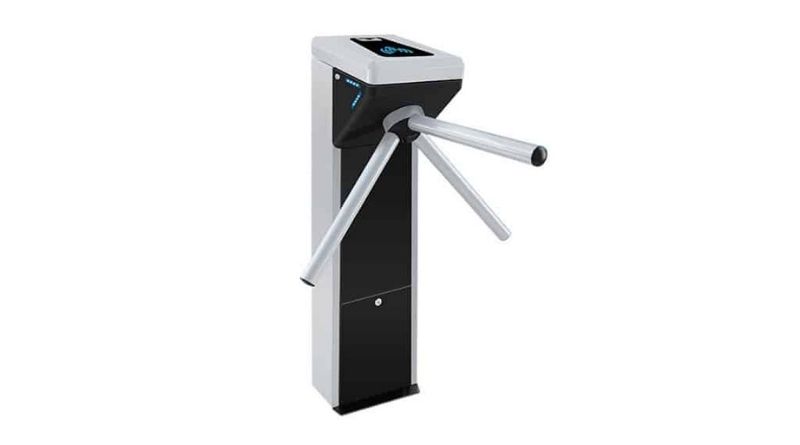Biometric Technology in Turnstile Entrances: Enhancing Authentication and Identity Verification
Biometric technology has revolutionized security systems, and its integration into turnstile entrances has significantly enhanced authentication and identity verification processes. In this article, we will explore the various aspects of biometric technology in turnstile entrances and its role in bolstering security measures.
1. The Rise of Biometric Authentication:
Biometric authentication has gained prominence due to its accuracy, reliability, and convenience. Facial recognition, fingerprint scanning, iris recognition, and palm vein authentication are common biometric technologies used in turnstile entrances. These methods leverage unique physical or behavioral traits to identify and verify individuals quickly and accurately. Biometric authentication offers a higher level of security compared to traditional methods such as access cards or PIN codes, as it eliminates the risk of unauthorized individuals misusing or stealing these credentials.
2. Facial Recognition for Seamless Identity Verification:
Facial recognition technology is widely used in turnstile entrances for identity verification. By analyzing and comparing facial features, the system can accurately authenticate individuals. Facial recognition offers a contactless and seamless experience, as it requires only a quick scan of the face for verification. This technology is robust against spoofing attempts, as advanced algorithms can differentiate between a live face and a photograph or mask. Facial recognition in turnstile entrances facilitates smooth and swift entry, enhancing convenience for authorized individuals.
3. Fingerprint Scanning for Unparalleled Accuracy:
Fingerprint scanning is a well-established biometric technology used for identity verification. Turnstile entrances equipped with fingerprint scanners authenticate individuals by comparing their scanned fingerprints against a database of enrolled fingerprints. This technology offers unparalleled accuracy, as fingerprints are unique to each individual. Fingerprint scanning in turnstile entrances ensures that only authorized individuals, with pre-registered and verified fingerprints, gain access. Additionally, fingerprint scanning eliminates the need for physical access cards or PIN codes, reducing the risk of credential theft or loss.
4. Iris Recognition for High-Security Applications:
Iris recognition technology is known for its high accuracy and reliability. With turnstile entrances integrating iris recognition, individuals can be identified and verified based on the unique patterns in their irises. Iris recognition offers several advantages, including contactless verification and resistance to changes due to aging or injuries. This technology is particularly suitable for high-security applications, where stringent authentication measures are necessary. Turnstile entrances with iris recognition provide advanced identity verification, ensuring that only authorized individuals gain access to secure areas.
5. Palm Vein Authentication for Enhanced Privacy and Security:
Palm vein authentication is a relatively newer biometric technology gaining popularity in turnstile entrances. By capturing and analyzing the unique vein patterns in an individual’s palm, the authentication system can verify their identity. This technology offers a higher level of security and privacy, as the veins are internal and difficult to replicate. Palm vein authentication is contactless and can be performed without physical contact with the turnstile entrance, ensuring hygiene and convenience while maintaining robust identity verification.
6. A Multimodal Approach for Enhanced Versatility:
Some turnstile entrance combine multiple biometric technologies to achieve enhanced versatility and security. For example, a turnstile entrance may incorporate both facial recognition and fingerprint scanning to offer multiple options for identity verification. This multimodal approach provides flexibility, allowing individuals to choose the authentication method that suits them best. Additionally, by combining multiple biometric technologies, turnstile entrances enhance security by adding layers of verification, minimizing the chances of unauthorized access.
7. Integration with Access Control Systems for Holistic Security:
Biometric technology in turnstile entrance can be seamlessly integrated with access control systems, creating a comprehensive and robust security solution. When combined with access control systems, biometric verification ensures that only authorized individuals gain access to secured areas. The integration allows for real-time monitoring and accurate recording of entry and exit events. Moreover, it enables organizations to generate audit trails and reports for compliance purposes, enhancing overall security management and control.
Conclusion:
Biometric technology has transformed turnstile entrances, enabling advanced authentication and identity verification. The integration of facial recognition, fingerprint scanning, iris recognition, and palm vein authentication enhances security measures by providing accurate, contactless, and reliable identity verification. Biometric technology offers convenience, heightened security, and accessibility control, making turnstile entrances an integral part of secure environments in various sectors, including corporate offices, transportation hubs, and public venues. By leveraging biometric technology, organizations can ensure a seamless, secure, and efficient entry process while protecting valuable assets and maintaining a safe environment.



